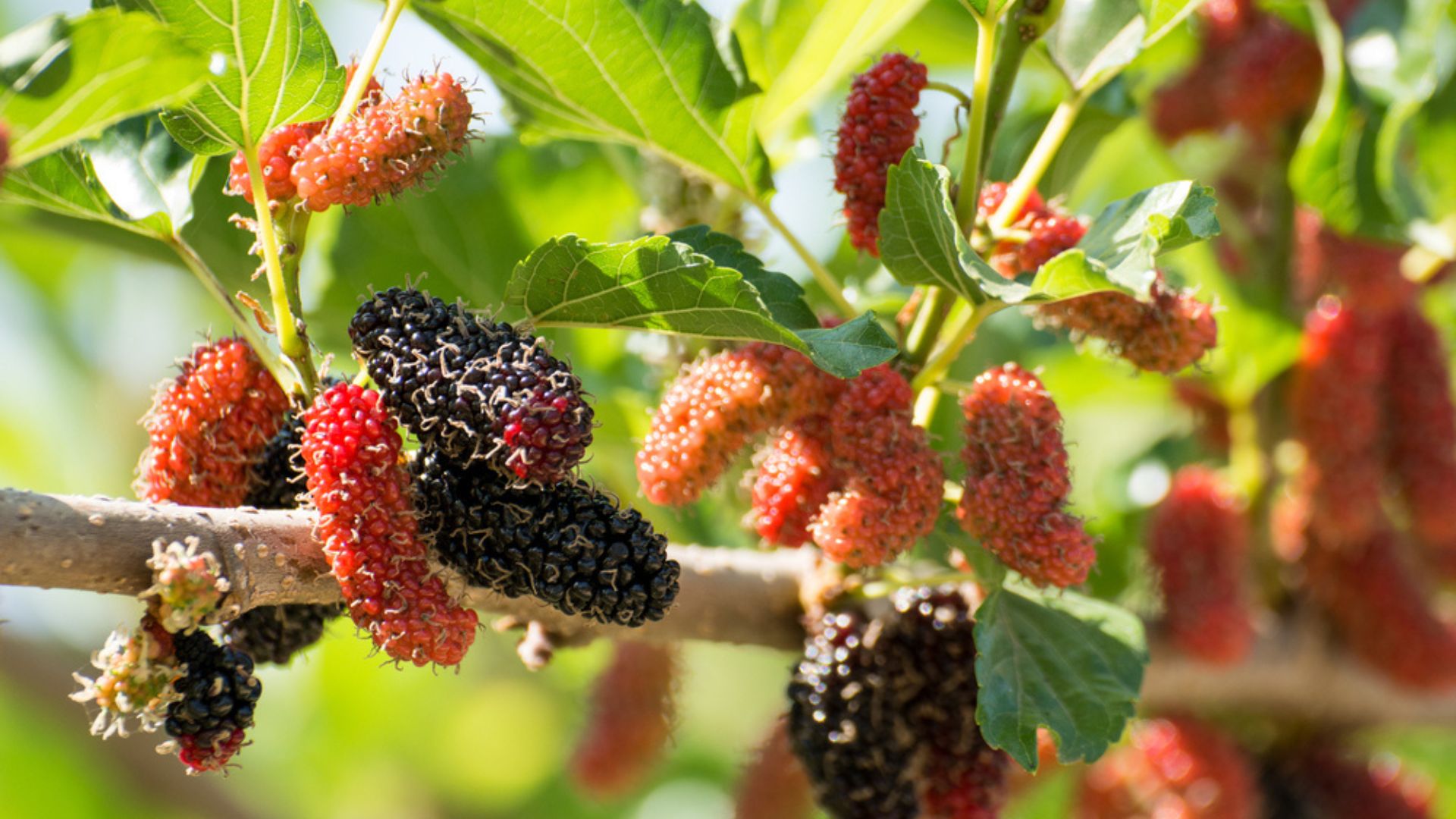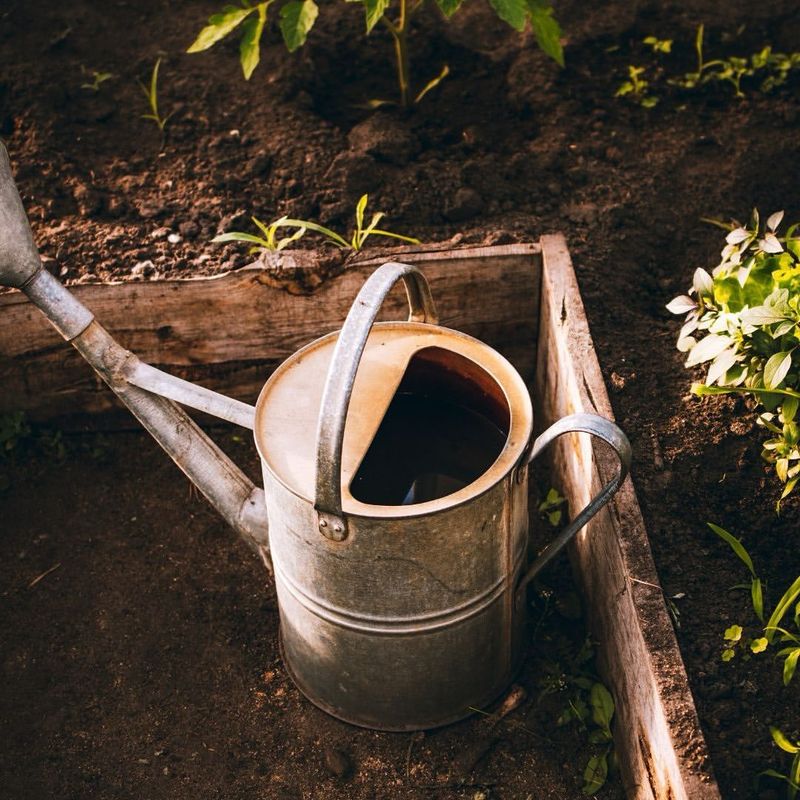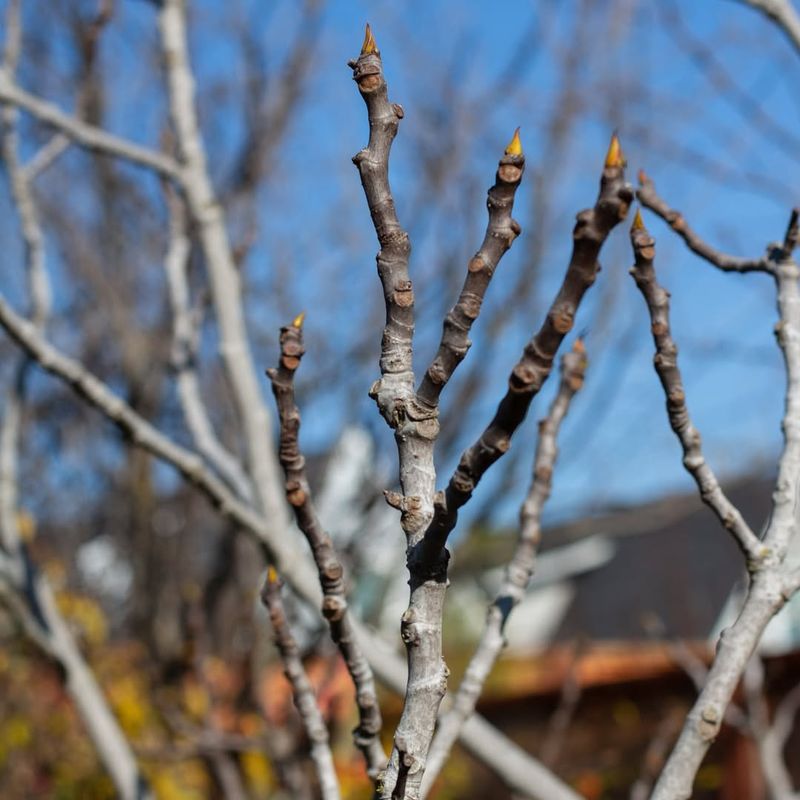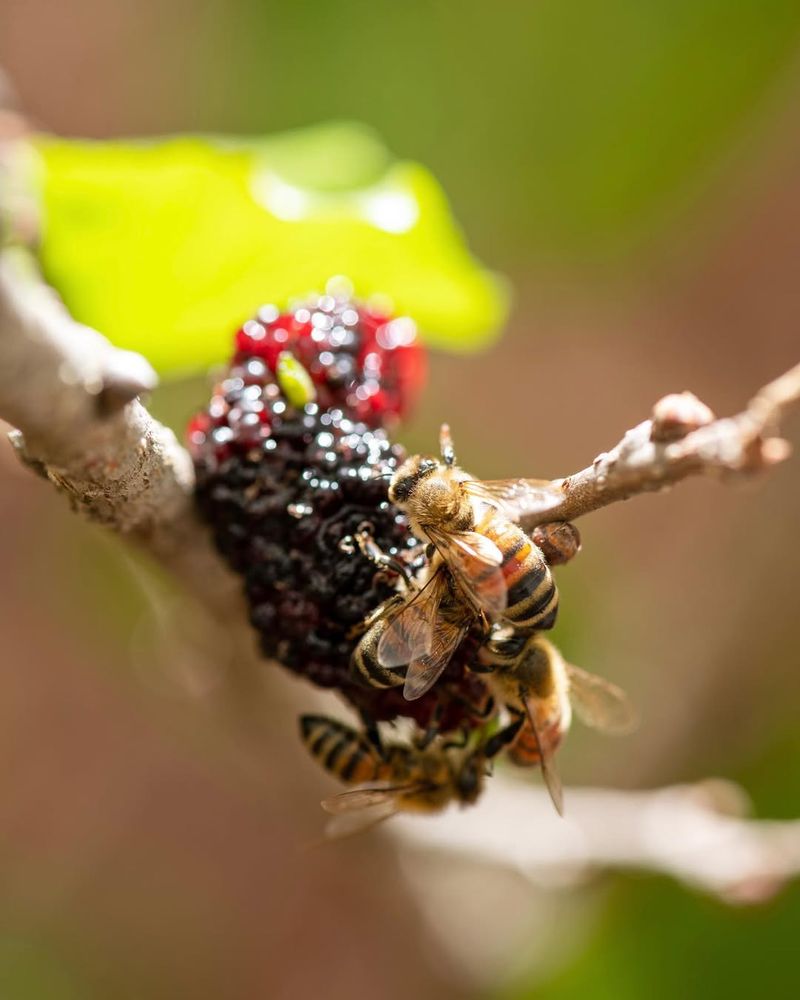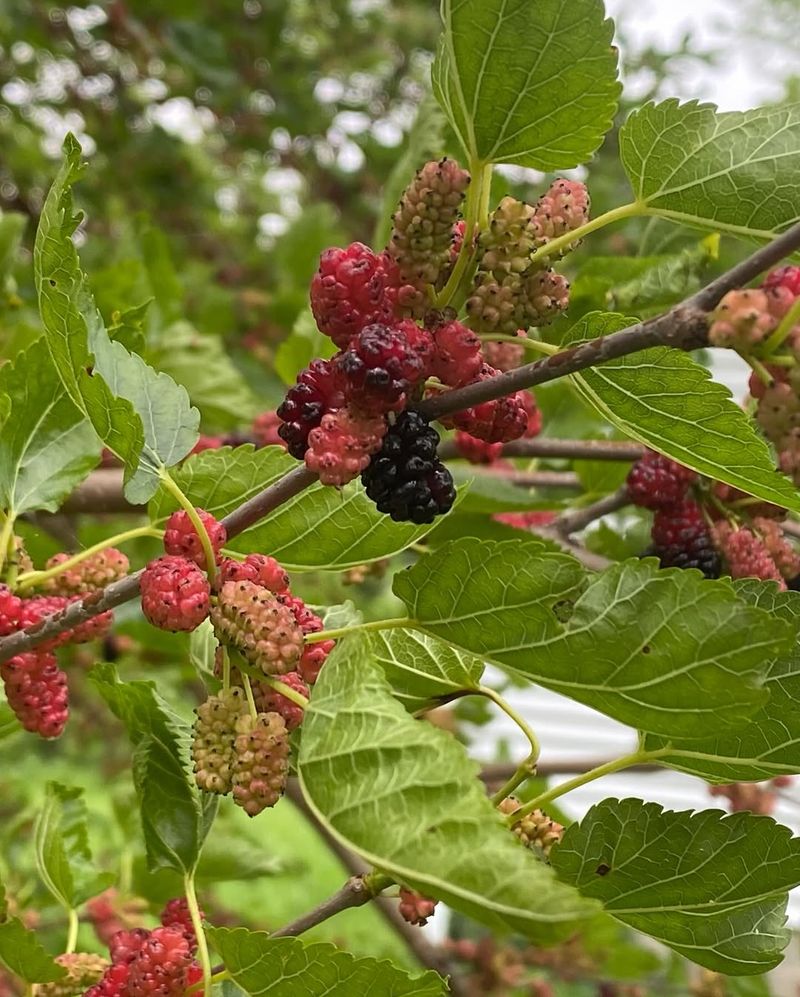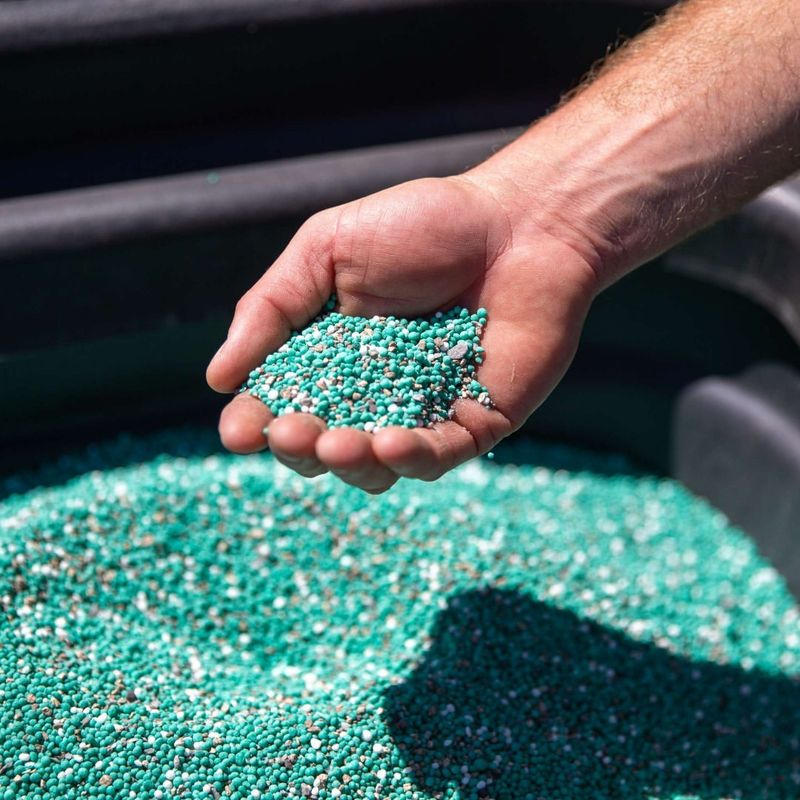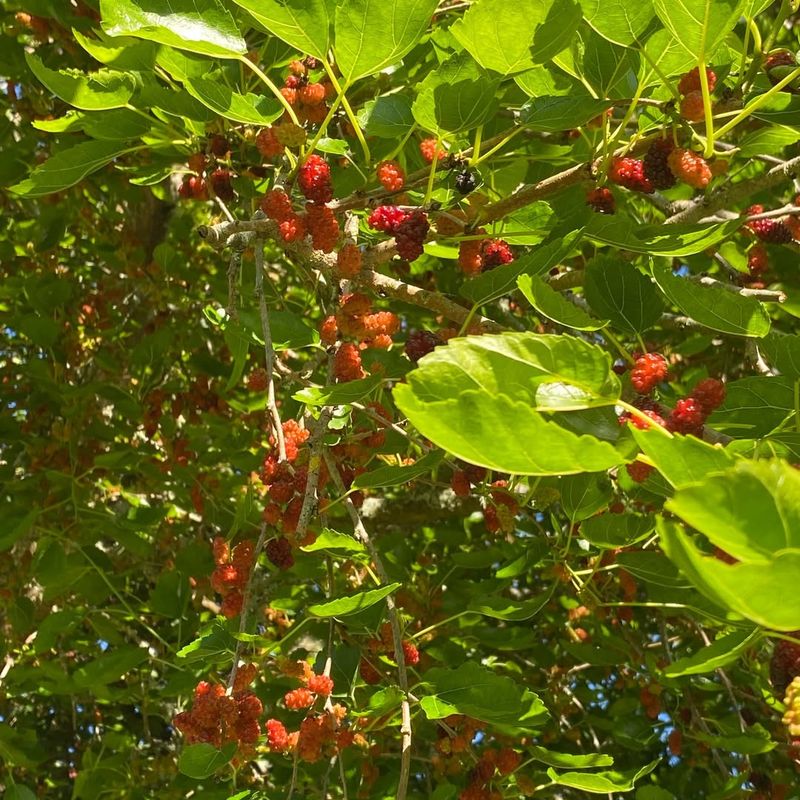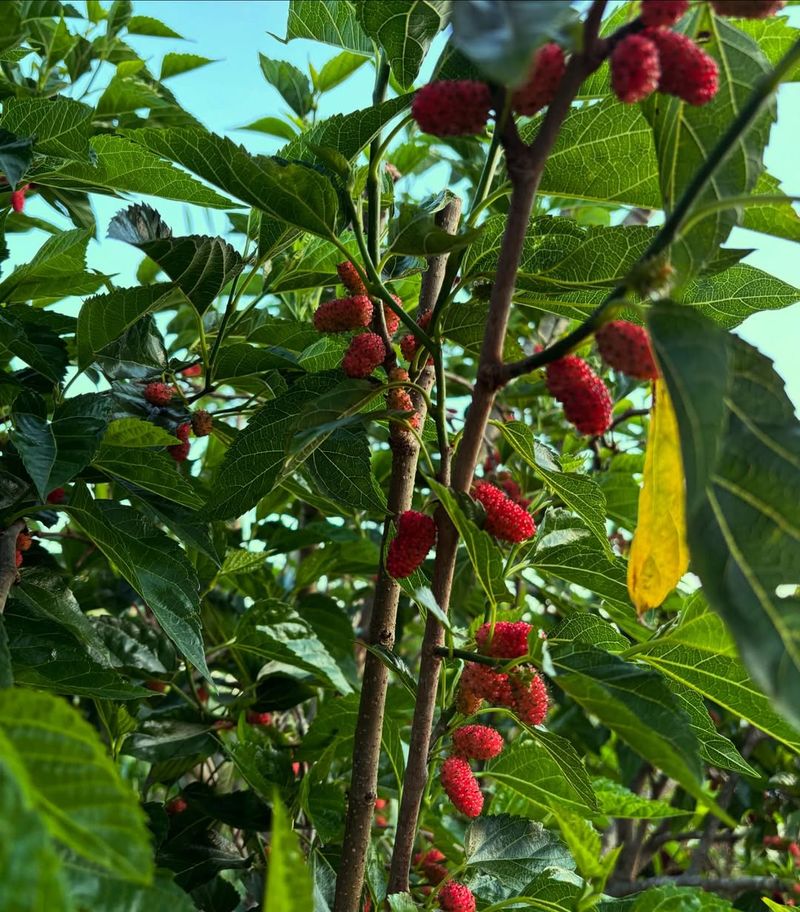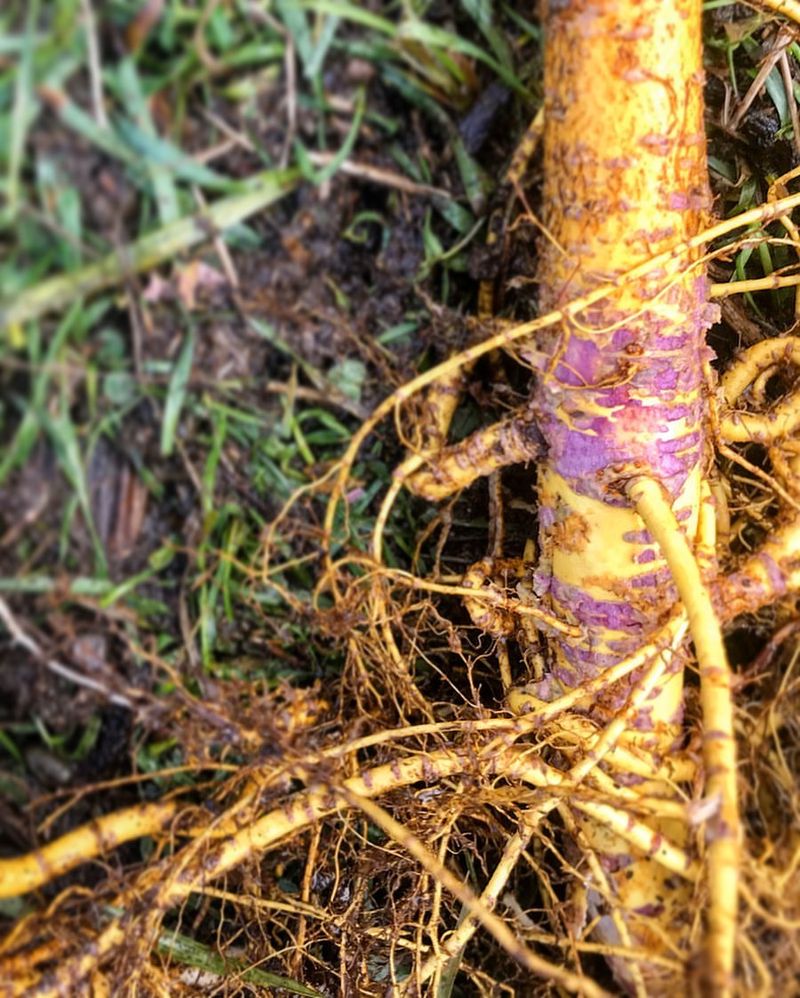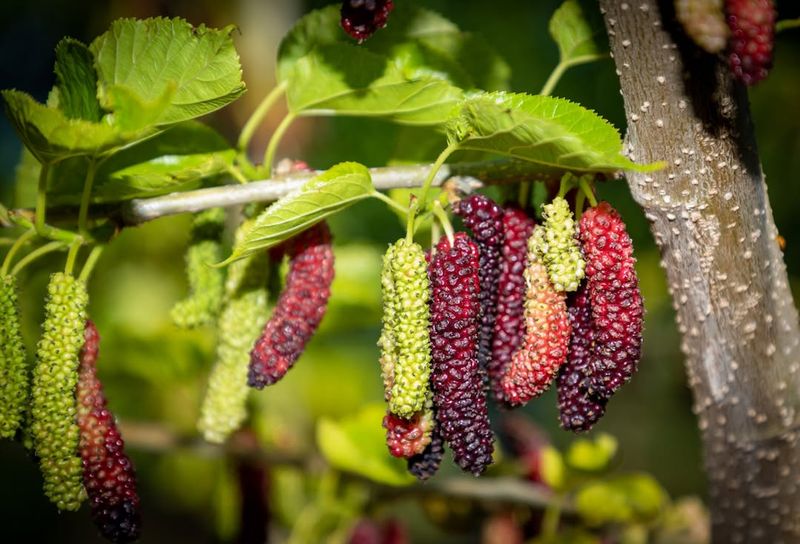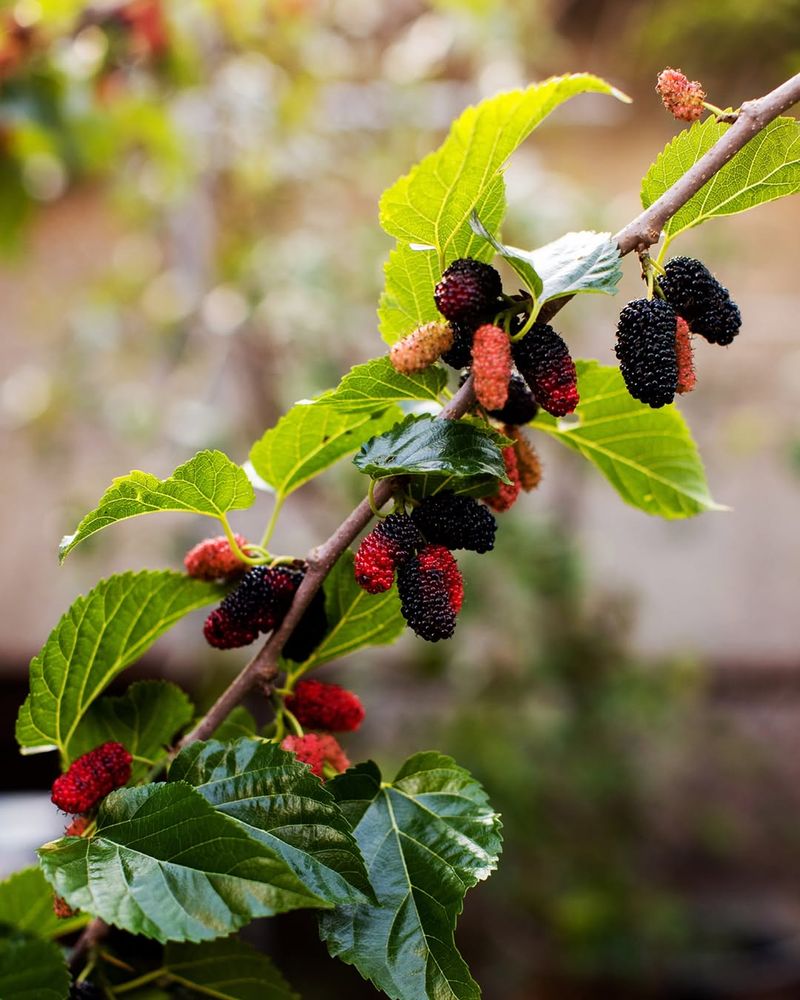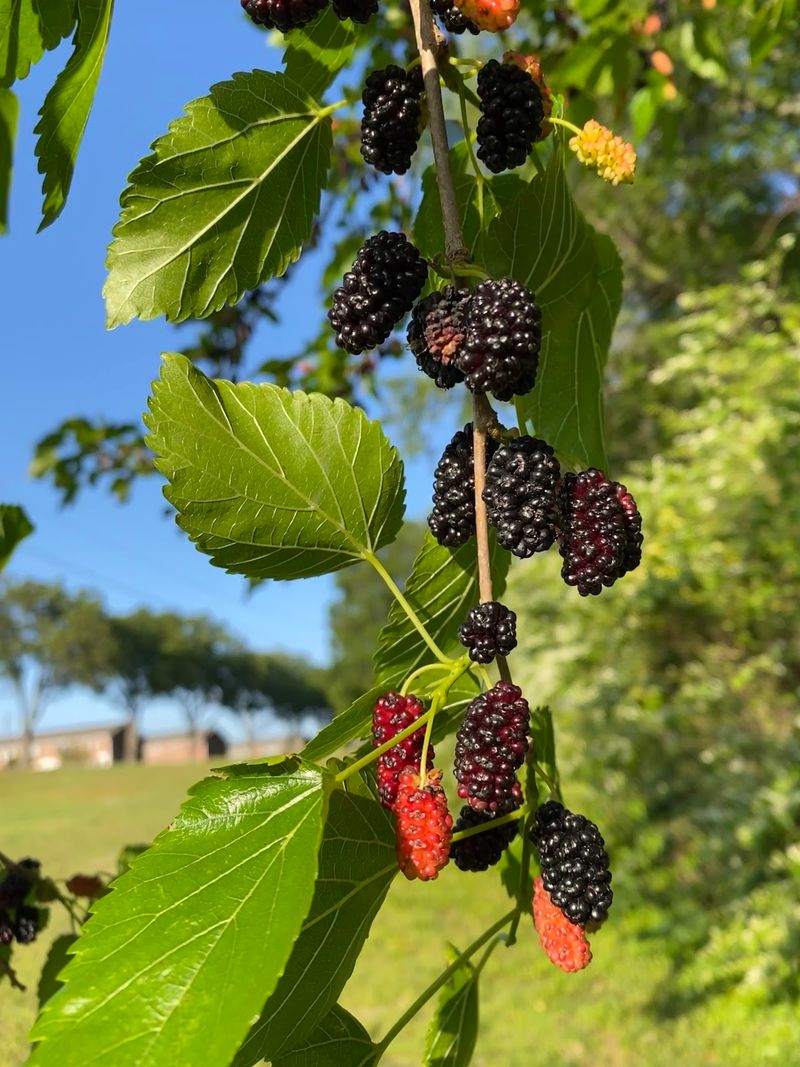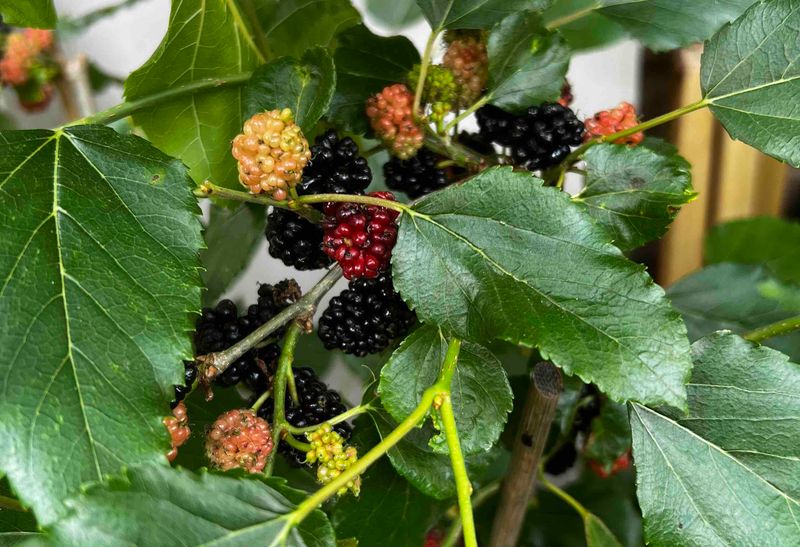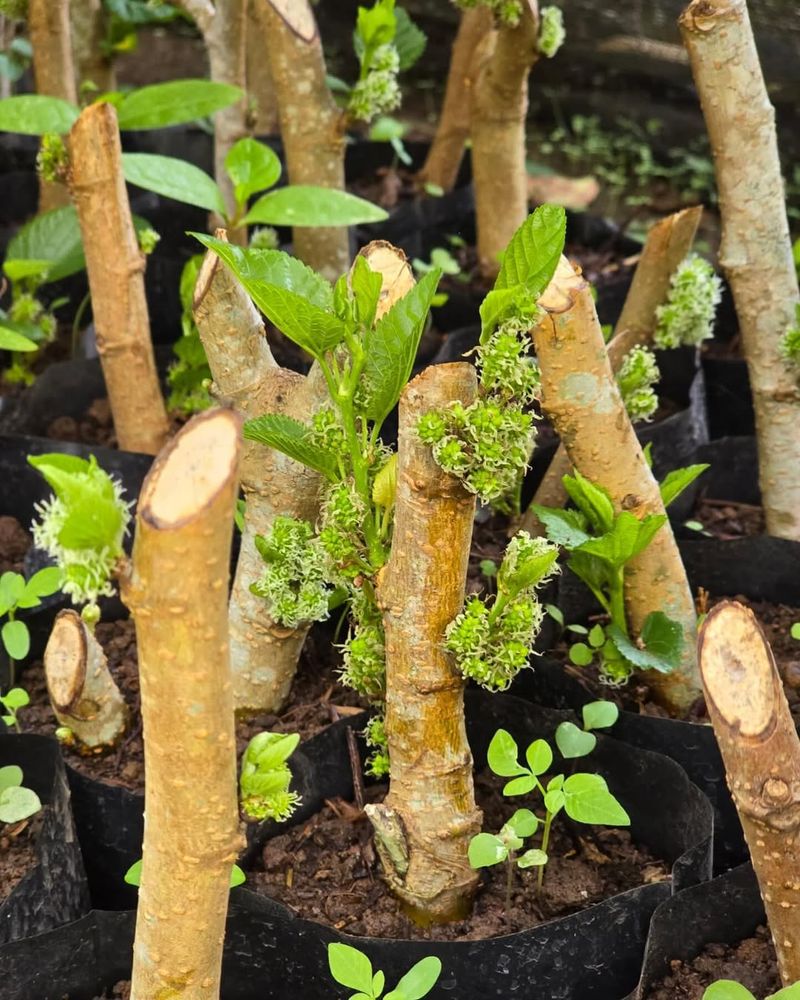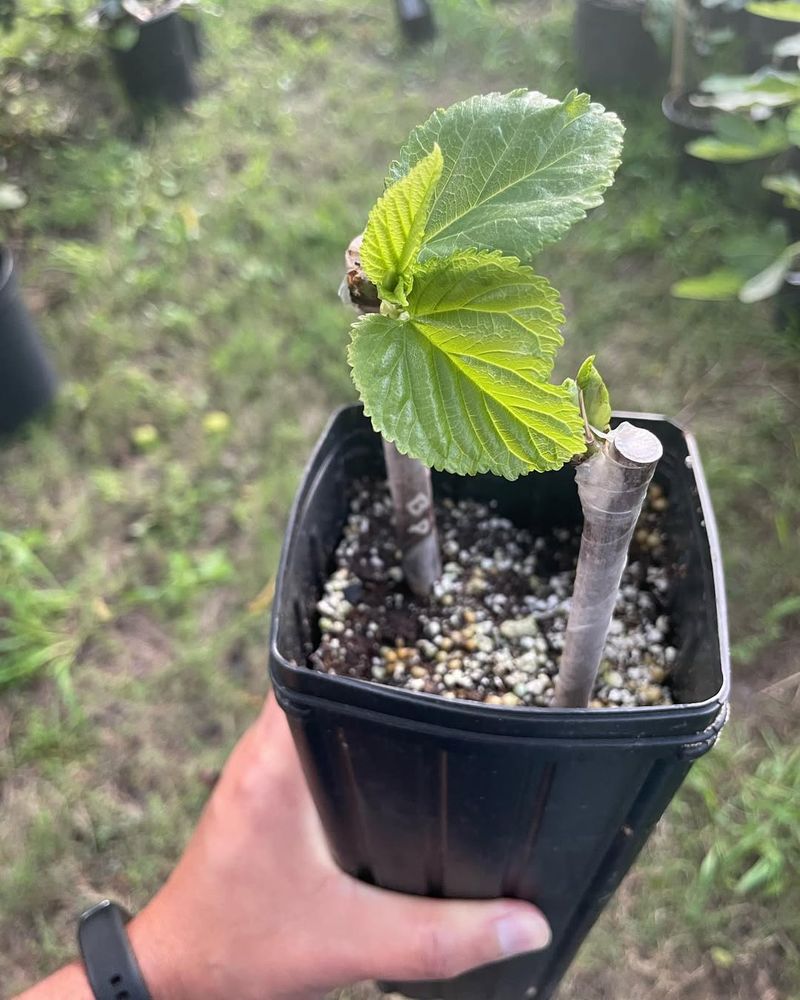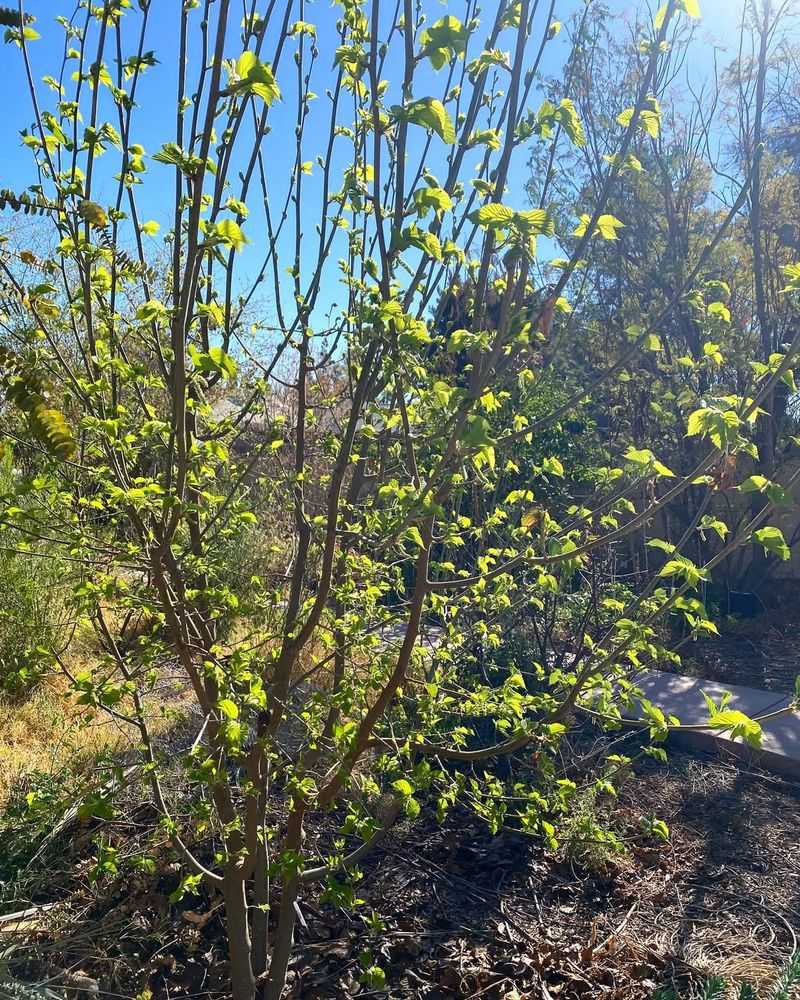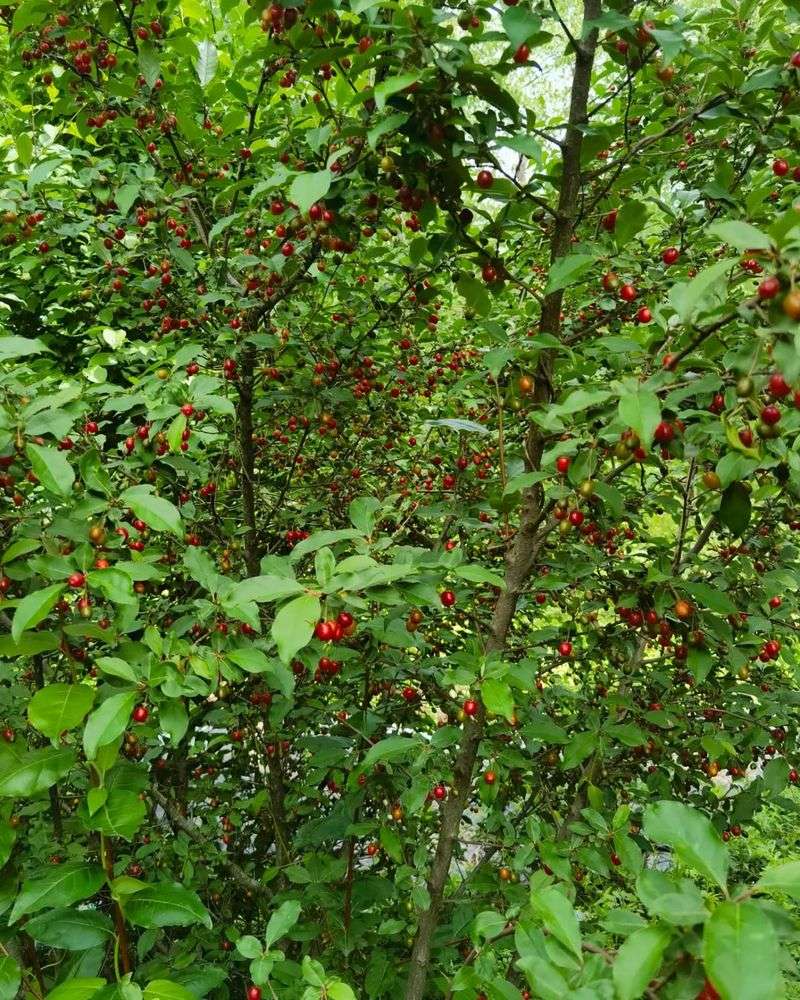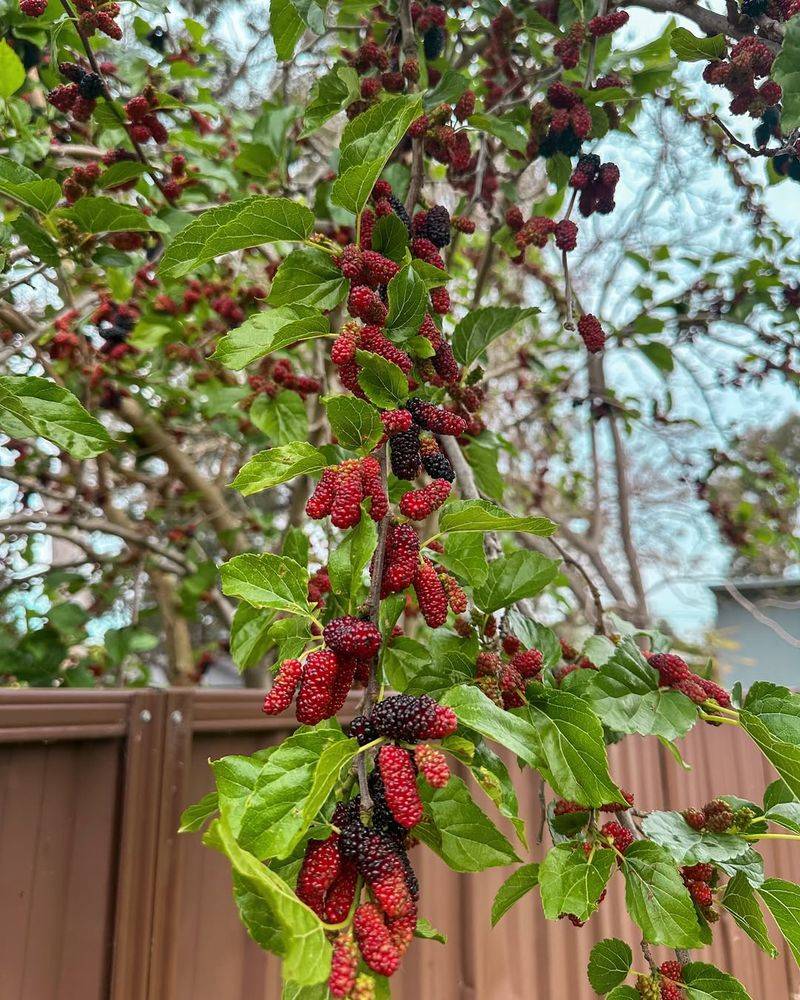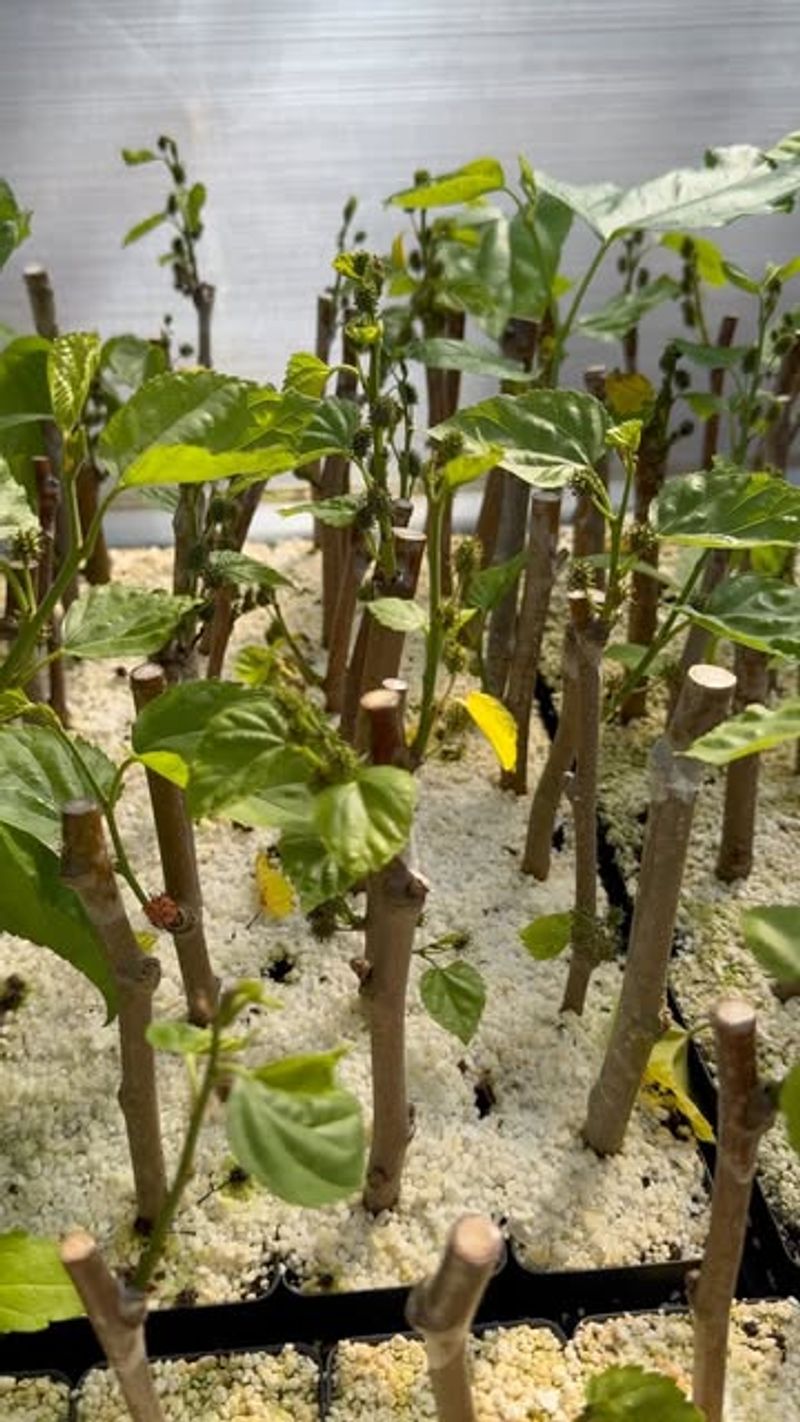Mulberry trees are the gift that keeps on giving—if you can actually get them to fruit. If yours is just standing there looking leafy and confused, don’t worry, you’re not alone. These trees can be a little stubborn, but with the right tips, you’ll go from “where are the berries?” to “why do I suddenly have enough for a pie, jam, and a freezer stash?”
We’ve rounded up 24 expert-backed tips to help your mulberry finally do its thing. Some are easy fixes, others require a little patience, but they all lead to one goal: sweet, juicy mulberries actually showing up when they’re supposed to. Let’s make that harvest happen.
1. Sunlight Saturation
Maximizing exposure to sunlight is like giving your tree a daily dose of energy. Mulberry trees thrive when they soak up the sun’s rays for at least six hours a day. Does your tree have ample access to direct sunlight?
Ensure it’s not shaded by structures or larger trees. A sunnier spot will encourage more fruit production. Don’t underestimate the power of sunlight; it works wonders. A happy, sun-kissed tree is a fruitful tree.
2. Proper Watering
Consistent watering keeps your tree happy. But beware of over-watering! Mulberry trees need a balance, with soil that is moist but not waterlogged. Are you providing just the right amount of hydration? During dry spells, water deeply once a week.
Keep an eye on the soil’s moisture level. A well-watered tree is a content tree, and content trees love to produce fruit.
3. Nutrient-Rich Soil
Getting the soil conditions right is like laying a strong foundation. Mulberry trees relish nutrient-rich, well-drained soil. Have you checked if the soil is too sandy or clay-heavy?
Enhancing it with organic matter or compost can improve drainage and fertility. Let the earthworms do their magic. A robust nutritional base ensures your tree can focus on fruiting rather than just surviving. It’s all about nurturing the roots.
4. Pruning Techniques
Pruning might sound like a chore, but it’s a tree’s best friend. Cutting back older branches allows new, fruitful growth to thrive. Is your tree looking a bit cluttered or overgrown?
Removing dead or crossed branches encourages better air circulation and light penetration. Your mulberry will thank you with more fruit. Remember, less is sometimes more when it comes to branches. Be the sculptor of your garden.
5. Pollination Partners
Bringing in the buzz can lead to a bounty. Mulberry trees often benefit from having pollinators like bees around. Are there enough friendly pollinators visiting your garden?
Planting flowers that attract bees can help. Insects play a vital role in transferring pollen, aiding in fruit production. It’s a partnership that blossoms beautifully. Encourage these winged allies to visit your tree and watch the magic happen.
6. Avoiding Frost Damage
Early frosts can be a big no-no for budding trees. Protecting your tree from sudden chills is crucial, especially in spring. Have you prepped for unexpected cold snaps?
Using frost blankets or covers can prevent frost damage to young buds. A little effort goes a long way in saving future fruits. Shield your tree from the cold, and it will reward you with a generous yield.
7. Mulching Magic
Spreading mulch is like giving your tree a cozy blanket. Mulch helps retain moisture and suppress weeds. Have you considered what kind of mulch suits your mulberry best?
Organic options like wood chips or straw are excellent choices. Lay it around the tree’s base, but not directly against the trunk. This cozy layer keeps the soil temperature stable and your tree snug. Happy roots mean happy fruits.
8. Balanced Fertilization
Feeding your tree is akin to giving it a nutritional boost. Mulberries appreciate a balanced fertilizer during the growing season. Are you feeding them enough?
Over-fertilization can lead to leaf growth at the expense of fruiting. Aim for a balanced mix, supplying essential nutrients without going overboard. Your tree’s fruitfulness depends on its diet. Treat it like you would your own nutrition.
9. Pest Control Strategies
Keeping pests at bay can save your tree from distress. Mulberry trees can attract unwanted bugs that damage leaves and fruits. Are you vigilant about inspecting your tree?
Natural predators or eco-friendly sprays can help manage these intruders. Regular checks ensure pests don’t gain a foothold. A pest-free tree is a happier tree, ready to produce more fruit. It’s all about paying attention to the small details.
10. Encouraging Biodiversity
A vibrant ecosystem supports tree health. Introducing diverse plant species around your mulberry tree encourages beneficial insects and wildlife. Is your garden a hub of biodiversity? Companion planting creates a balanced environment that boosts fruit production.
It’s nature’s way of lending a hand. Embracing diversity enriches your garden and boosts your tree’s capacity to fruit. Welcome the wild variety!
11. Training and Shaping
Training trees helps direct their growth for optimal fruiting. Mulberries can benefit from being shaped in their early years. Have you tried guiding your tree’s branches?
Using wires or stakes can encourage a more open structure. It ensures sunlight and air reach all parts of the tree. A well-trained tree stands proud and productive. It’s a rewarding exercise in tree care.
12. Root Zone Protection
Guarding the roots is like safeguarding a treasure chest. The root zone of a mulberry tree is vital for its health and fruiting. Have you ensured the roots are protected from temperature extremes and foot traffic?
Mulching and barriers can prevent compaction and damage. Treat this area with care, and you’ll see the fruits of your effort. Protect the roots, and the tree will flourish.
13. Seasonal Care Adjustments
Adjusting care with the seasons keeps your tree in tune with nature. Mulberry trees have different needs throughout the year. Are you changing your care routine as the seasons shift?
Pruning in winter, fertilizing in spring, and watering in summer are key. Tailoring your care approach ensures the tree stays healthy year-round. A tree in sync with the seasons is ready to fruit.
14. Disease Prevention
Preventing disease is like giving your tree a clean bill of health. Mulberry trees can suffer from ailments that hinder fruiting. Are you vigilant in spotting symptoms?
Early intervention and proper care can keep diseases at bay. Regular monitoring and sanitation practices are vital. A disease-free tree is a happy, productive tree. Keep it healthy, and it’ll keep producing.
15. Proper Spacing
Giving your tree room to breathe is essential. Mulberry trees need space to grow and flourish. Have you planted yours with enough distance from others?
Crowding can lead to competition for resources and hinder fruiting. Ensure there’s ample space for roots to spread and branches to grow. A well-spaced tree has room to thrive and bear fruit. It’s like giving it personal space.
16. Wind Protection
Shielding from strong winds prevents damage and stress. Mulberry trees can suffer when exposed to harsh gusts. Have you set up any windbreaks? Hedges or fences can offer protection and help the tree conserve energy.
A calm environment allows it to focus on fruiting. Protect your tree from the wind’s wrath, and it’ll reward you. It’s like giving it a gentle hug.
17. Choosing the Right Variety
Selecting the right variety is like picking the perfect dance partner. Some mulberries are more suited to fruiting in certain climates. Have you chosen a variety that thrives in your area?
Consider factors like climate, space, and soil conditions. A well-matched variety will be more inclined to produce fruit. It’s all about compatibility. The right choice sets the stage for a fruitful performance.
18. Regular Monitoring
Consistent monitoring is akin to being your tree’s personal coach. Keeping track of its growth and health can lead to better fruiting. Are you observing changes in foliage, growth patterns, or fruiting cycles?
Documenting these aspects helps adjust care routines as needed. Your attentive eye ensures the tree stays on the right path. A watched tree is a well-tended one, ready to fruit.
19. Soil pH Balance
Balancing the pH is like fine-tuning an instrument. Mulberry trees prefer slightly acidic to neutral soil. Have you checked the pH level of your soil? Testing kits are readily available. Adjusting the pH with lime or sulfur can optimize conditions.
A balanced pH supports nutrient absorption and overall health. Ensuring this harmony helps the tree focus on fruiting. Play the right note with pH balance.
20. Grafting Techniques
Grafting can be a game-changer for fruit production. It combines the best traits of different varieties. Have you tried grafting techniques to boost your tree’s fruiting potential?
It’s a skilled task but rewarding. Successful grafts can lead to more robust and fruitful trees. Blend the strengths of various cultivars and witness the transformation. It’s like crafting a masterpiece in your garden.
21. Encouraging Dormancy
Allowing for dormancy is like giving your tree a well-deserved nap. Mulberry trees need a period of rest to recharge. Are you ensuring it gets enough downtime during winter?
Reducing water and fertilizer helps it enter dormancy. This rest phase is critical for future fruiting. Respect its natural cycle, and it’ll emerge ready to produce. Sometimes, doing less is more.
22. Companion Planting
Creating a supportive community around your tree fosters growth. Companion planting can aid in pest control and soil fertility. Have you considered what plants could benefit your mulberry?
Herbs and flowers can attract beneficial insects and deter pests. It’s a natural way to boost health and fruiting. Let the garden work together in harmony. Friends in the garden make for happy trees.
23. Climate Considerations
Understanding climate needs is like setting the stage for success. Mulberries thrive in warm, temperate regions. Are you planting in a climate that matches their preferences?
Cold climates may need extra protection measures. Consider your local weather patterns and plan accordingly. A tree in the right climate is more likely to fruit. It’s all about setting the scene just right.
24. Propagation by Cutting
Propagating by cuttings is like extending the family tree. It’s an effective way to replicate successful fruiting varieties. Have you tried rooting cuttings to expand your grove?
Using a healthy branch, root hormone, and patience, new trees can flourish. It’s a cost-effective method to increase your mulberry clan. Watch them grow and multiply, bearing fruits like their parent. Extend the legacy with cuttings.

